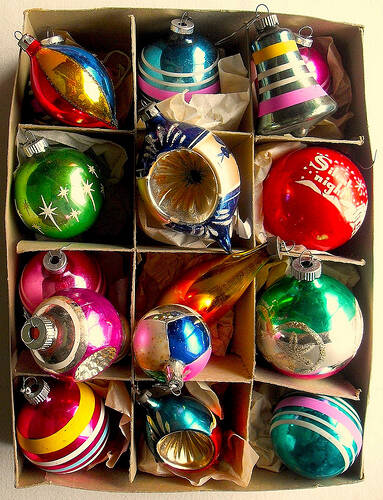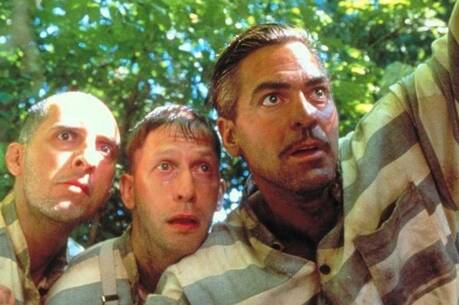At the risk of dating myself,Christmas mornings at my home in suburban Philadelphia during the mid-1960’s and early 1970’s were filmed not with a Flip camera or anything remotely digital, but with an enormous contraption that my father bought in the pre-pre-digital age. Before my sister and I were permitted to fly down the stairs on the morning of Dec. 25 (pajama-clad, we jostled at the top of the staircase for first place in the year’s most important race), my father had to set up his beloved movie camera.
For reasons I cannot recall, attached to the top of this particular camera was a monstrous square spotlight, whose colossal bulb did not simply illuminate our living room. It filled every corner of the house with a nuclear-blast-level light, temporarily blinding anyone foolish enough to turn an eye in its direction. “O.K.,” my mother would say. “We’re ready!” At this point my sister and I would tumble down the stairs and, in the searing white light, grope our way toward the loot stashed under the tree.
Not surprisingly, the surviving films of these mornings, while undeniably well lit, make my sister and me appear like dazed moles emerging from underground.
As in many families, this was not the only tradition surrounding, as the writer Jean Shepherd called it, “lovely, beautiful, glorious Christmas, around which the entire year revolved.” Christmas Eve and Christmas Day at our house followed a pattern both invariable and, for a child, comforting. The tree (real, of course) would have been purchased a few days before the Big Day, during a Saturday afternoon. That event typically coincided with my father slicing open a finger with a handsaw while hacking off the bottom of the tree (which was always too tall). Ours was one of the few trees in the neighborhood often covered in blood.
By Christmas Eve, then, the tree was already decorated with colored (not white) lights, glass (not plastic) ornaments, and tinsel (not garland)—which you were to “drape,” as my mother would say, “not clump.” And the tree always stood in a particular corner of our living room. One year, in a willful break with tradition, our family decided to erect the tree in our recently renovated rec room. As the evergreen was dragged across the floor, hundreds of dry pine needles fell off, lodging themselves deep in the red-and-orange shag carpet. We were still finding needles 20 years later.
Christmas Eve was supposed to be quiet, a well-earned respite from the shopping and cooking of the previous few days. While my mother and father enjoyed “watching the tree,” my sister and I would avidly scan the local TV news programs, which around 9 o’clock would begin broadcasting reports of an unidentified flying object coming down from the North Pole and making its way toward Philadelphia. As a boy, it never occurred to me to question the accuracy of these media reports: that Santa’s first stop was Philadelphia seemed eminently sensible. After all, wasn’t his first stop after Thanksgiving Wanamaker’s department store downtown? As far as I was concerned, Santa had his priorities straight. Cookies and milk were set out for Santa in our living room near the tree. (“The back door,” said my father, matter-of-factly, when asked how Santa could get into our fireplace-free house.)
Once we had finished with the ritualized unwrapping of the gifts (one per person, until all the gifts were unwrapped, crumpled wrapping paper collected in a large Hefty bag), my sister and I immediately re-enacted another family drama: determining who had received the most presents. “Now, Santa always brings you the same amount,” said my father rolling his eyes. “We checked.”
“Look,” I would say to my sister as I piled up my toys, “I got more.” But even if it happened that I mistakenly received an extra gift, my parents knew how to deter further sibling rivalry.
“No,” my mother would say, “G.I. Joe and his rifle are one gift, not two.”
The rest of the day conformed to a similarly traditional plan. Breakfast was a more elaborate and relaxed affair than usual (pancakes versus cereal), followed by Mass and an early dinner at home or at the home of relatives. When my parents hosted the Christmas celebration, the main course was invariable: turkey served with two kinds of stuffing—bread and “meat” stuffing, an Italian specialty of my mother’s family, made with ground beef, raisins and celery, which though delicious never failed to elicit elaborate retching sounds when described to my friends in grammar school.
Of course not every family has the same traditions. Indeed, one of my earliest experiences of what theologians and social scientists call “inculturation” came when I realized that not everyone followed our Approved Christmas Plan. Certainly I knew that very slight alterations in the tradition occurred from time to time. Across the street from our house lived the Ash family; I had grown up with their daughter, Carol. One Christmas morning, Carol dropped by our house (another tradition: we always compared what we had given our parents) to invite me over to view their new tree. To my surprise, it was covered entirely in red lights—different, to be sure, but still within the limits of my “horizon of meaning,” as Karl Rahner would say.
One year Carol even invited me to a “Christmas pageant” at her local church. The Ashes were a faith-filled Presbyterian family, and Carol was forever including me in her church’s “youth group” functions—fun events that included roller skating, movies and bowling. The combination of fun and religion seemed a novel and enjoyable one as an adolescent, and if one’s faith life depended not on which church you were baptized into, but on how much fun you had as a teenager, I would probably now be a Presbyterian. (Catholic readers may ask: What about Catholic youth groups? Why didn’t you join them? The answer, as near as I can remember, is that the Presbyterians skated more.) That year in Carol’s starkly elegant whitewashed church, I joined the congregation singing carols and watching the children recreate the story of the Nativity. Her family’s Christmas celebration was slightly different from our own, to be sure, but no less beautiful.
Real inculturation would occur later, during high school and college. One of my best friends, named John, came from a large Polish-Italian family. As a teenager, I found myself spending a great deal of time with John’s family, no matter what time of year. During the school year I would drop by his house after we had taken in a movie, to catch up with John’s parents. In the summertime, I was a frequent guest at his family’s little beach house in New Jersey (“down the shore,” one says in Philadelphia). There his mother and father and brothers and sisters taught me how to snare crabs from a boat (smelly fish heads and a wire cage usually did the trick), play pinochle and dance the polka.
The yuletide traditions at John’s house were new to me. For one thing, Christmas Eve seemed to be the more elaborate celebration. In contrast to our own peaceful family gathering, the Olszewskis prepared a colossal dinner of ravioli, fish, galumpkes, cookies, desserts and more. Charades were played into the early hours, and—the biggest shock—gifts were opened before Christmas morning. Though I found this a serious breach of tradition, I forgave his parents, as the food was so good, the charades so much fun and his family so welcoming. In one corner of the room John’s father laughed and puffed on his pipe, exhaling the aromatic scent of Captain Black’s tobacco, the same thing I would smell in the summer on his beat-up boat, as we went “crabbing,” the sea air mixing with the pungent tobacco smoke. Spending a few hours at John’s house on Christmas Eve and then returning to my own seemed the best of both traditions: the active and the contemplative.
One irony of these family traditions is that the family that celebrated the original Christmas, the Holy Family, broke with tradition as much as they exemplified it. The Gospel of Matthew, for example, carefully lists the family’s genealogy—the tradition that lay behind the birth of Jesus: the child will be the fulfillment of the Old Testament. At the same time, Joseph and Mary found themselves in a situation that was anything but traditional, with almost no experience to guide them.
Moreover, if we fail to consider the difficulties faced by the Holy Family, we can be lulled into thinking that the first Christmas was a familiar, even cozy, affair. After their arduous journey from Nazareth, Mary and Joseph were most likely daunted by the sheer uncertainty of the future, uncomfortable in their rough lodgings in Bethlehem and still struggling to understand the very meaning of their son’s birth. Yet even as they saw themselves moving away from traditional expectations, they relied on the most important part of their tradition—the knowledge that the God who had accompanied their family for so many generations would not desert them. What supported them in untraditional times was tradition itself.
My father died several years ago and so no longer celebrates with us, at least on earth. But I like to think of him celebrating Christmas not in the harsh light of his Super-8 movie camera, but in the warm glow of the heavenly banquet. The Ashes recently moved away, after decades living across the street from my mother; but Carol and I frequently see one another around Christmas. Now, however, we talk less about the presents we’ve received and more about her three sons and my two nephews. John’s parents died a few years before my own, and his family has moved away, but they still gather to celebrate Christmases together, and with the same food. Now that my sister is married, I am being introduced to new Christmas traditions. My brother-in-law’s family, a large and welcoming Italian-Irish clan, inclines more to John’s type of celebration—with an emphasis on Christmas Eve dinner, and a special emphasis on food. And as I meet new friends from my local Jesuit parish, I am discovering that New Yorkers have their own special traditions as well. And now that I am a priest, I have a new tradition: celebrating Midnight Mass.
But those earlier traditions, discovered as a child, remain with me: the movie cameras, the unidentified flying objects, the carefully measured piles of gifts, the Christmas pageants, the late-night charades. And each Christmas, when I think about the Holy Family, I remember other holy families as well—the ones who brought me up in the faith, who showed me how to love and who taught me how to celebrate Christmas.
This essay is adapted from one that originally appeared in America in 2003.








